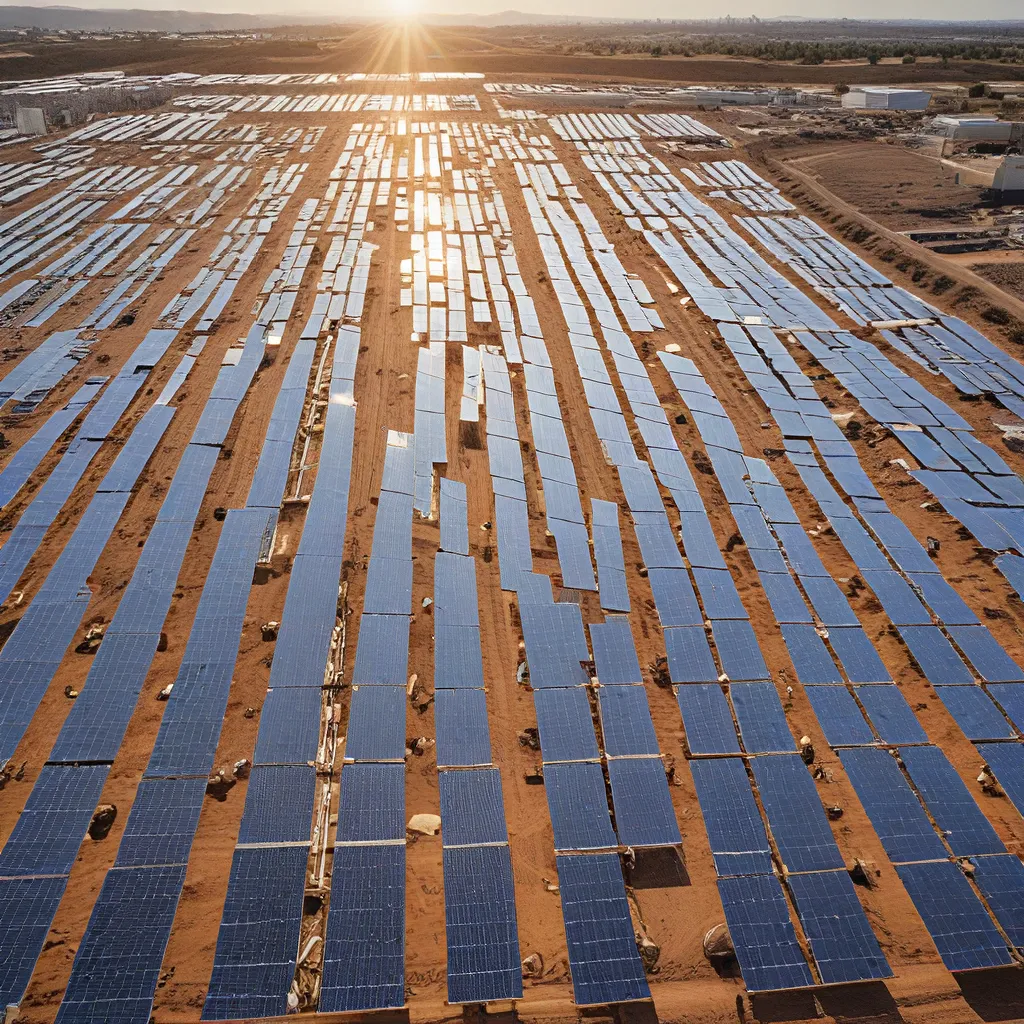
You know, the other day I was chatting with my neighbor Phil, who runs a small organic farm down the road. He was telling me all about this wild new project he’s working on – converting his farm’s waste into clean, renewable energy using solar power. I have to admit, I was pretty skeptical at first. I mean, turning trash into treasure? That sounds like some kind of futuristic sci-fi stuff. But the more Phil explained, the more it started to make sense.
The Power of the Sun
It all comes down to harnessing the incredible power of the sun. As it turns out, our good friend the sun is practically bursting at the seams with energy. In fact, the National Renewable Energy Laboratory estimates that more energy from the sun falls on the earth in one hour than is used by everyone in the world in one year. That’s a whole lot of untapped potential!
And it’s not just for powering our homes and businesses either. Innovative farmers and energy providers are finding all sorts of creative ways to harness this solar bounty – including transforming waste into clean, sustainable fuel. I know, I know, it sounds almost too good to be true. But trust me, the science behind it is solid.
Turning Waste into Watts
You see, the key is in the process of photosynthesis. This amazing natural phenomenon allows plants to absorb the sun’s energy and convert it into the nutrients they need to grow. And when those plants eventually decompose, that stored energy can be harnessed and converted into all kinds of useful forms – including biogas and biofuels.
Now, I know what you’re thinking – “But wait, doesn’t that just create more waste and pollution?” And you’d be right to be skeptical. Traditional waste-to-energy facilities that rely on burning trash or other organic matter can actually end up producing more greenhouse gases than they save. Not a great trade-off if you ask me.
The Solar Solution
But that’s where the solar-powered part comes in. By coupling these waste-to-energy facilities with large-scale solar arrays, we can create a closed-loop system that’s truly renewable and sustainable. Solar panels capture the sun’s energy and convert it into electricity, which can then be used to power the waste-to-energy process. And the best part? Any excess electricity can be fed back into the grid, offsetting the facility’s operational costs and providing a steady stream of revenue.
It’s a win-win-win situation if you ask me. We’re taking something that would otherwise just sit in a landfill, decomposing and releasing harmful methane, and turning it into a valuable energy source. And we’re doing it all with the power of the sun – one of the most abundant and renewable resources we have.
The Future is Bright (and Sunny)
Now, I know what you’re thinking – “This all sounds great, but is it really feasible on a larger scale?” Well, let me tell you, the future is looking bright (and sunny) when it comes to solar-powered waste-to-energy facilities.
Plug N’ Save Energy Products, the company I work for, is already leading the charge in this space. We’ve partnered with forward-thinking municipalities and waste management companies to develop cutting-edge facilities that are not only environmentally friendly, but also economically viable.
Just take a look at the Agua Caliente Solar Project in Yuma, Arizona – the world’s largest array of photovoltaic panels. This massive solar farm generates over 600 gigawatt-hours of electricity per year, powering thousands of homes and businesses. And that’s just the tip of the iceberg.
The Benefits Add Up
The benefits of these solar-powered waste-to-energy facilities are almost too numerous to count. Not only are they reducing greenhouse gas emissions and diverting valuable resources from landfills, but they’re also creating jobs, generating revenue, and providing a reliable source of renewable energy.
And the best part? They’re becoming more and more affordable every day. As the cost of solar technology continues to plummet and government incentives and tax credits make these projects more accessible, we’re seeing a growing number of communities and organizations jumping on the solar-powered waste-to-energy bandwagon.
A Sustainable Future
It’s a future that’s not just clean and green, but also economically viable and socially responsible. By harnessing the power of the sun and transforming our waste into a valuable resource, we can create a more sustainable world for generations to come.
And you know what they say – the future is bright. Or in this case, the future is bright and sunny. So why not join the solar revolution and help us build a brighter, more sustainable tomorrow? Trust me, your grandkids will thank you.